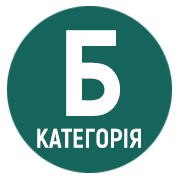THE MAGIC OF NUMBERS IN A FOLK TALE: A COMPARATIVE ANALYSIS OF UKRAINIAN AND TURKISH FAIRY TALES
DOI:
https://doi.org/10.32782/2412-933X/2025-XXIII-16Keywords:
Ukrainian folk tale, Turkish folk tale, symbolism of numbers, symbol, folkloreAbstract
The article analyses the symbolism of numbers in Ukrainian and Turkish folk tales. The study of numbers in the tale genre has revealed cultural parallels and differences in the tale genre of two different nations. It proves that numerical symbols are an important part of folklore heritage, as they not only structure narratives, but also reflect the worldview, religious beliefs and moral values of society. The numbers 3, 7, 12, and 40 in different folklore systems acquire special meanings that are transmitted through fairy tales and legends. An analysis of the frequency and role of each of these numbers in Ukrainian and Turkish fairy tales suggests that numerical symbolism has a sacred and communicative function. In particular, the number three in both cultures is associated with completeness, completeness and cyclicality, but has its own cultural peculiarities: in the Ukrainian tradition, it often denotes the completion of stages or trials, and in the Turkish tradition, it means success after two previous attempts. The number seven in Ukrainian and Turkish folklore is also sacred and symbolises magic and mystery, uniting the heavenly and the earthly. However, while in Ukrainian culture it is associated with spiritual harmony, in Turkish culture it acquires the features of divine power. The number 40 is less common in the Ukrainian fairy tale tradition, but in Turkish folklore it occupies a special place and is associated with the process of purification and symbolises a period of renewal. A comparative analysis shows that numerical symbolism in Ukrainian and Turkish fairy tales, despite the similarity of certain motifs, has its own unique features due to religious and socio-cultural influences. The symbolism of numbers in the folklore of these peoples forms a rich world of images that serves as an important channel for preserving national identity and transmitting cultural memory from generation to generation. The study allows us to better understand the historical, religious and social relations between the two peoples, revealing both universal symbolic motifs and cultural specifics.
References
Artun E. Türk Halkbilimi, İstanbul : Kitabevi Yayınları, 2005.
Durbilmez, B. Kırım Türk Halk Anlatilarinda Sayi Simgeciliği. Millî Folklor. 2007. № 19 (76). S. 177–190.
Işık N. Türk Masallarının Sembolik Açıdan Çözümlenmesi. Doktora Tezi. Fırat Üniversitesi Sosyal Bilimler Enstitüsü. Elazığ, 2009. 603 P.
Kizildağ H. Sembolik Bir Masal Okumasi: Kırk Şehzade ile Yedi Başli Ejderha Çampalak. Kültür Araştırmaları Dergisi. 2023. № 18. S. 242–256. DOI: 0.46250/kulturder.1341148.
Koca S.K. Türk Kültüründe Sembollerin Dili. Doktora Tezi, Sakarya Üniversitesi Sosyal Bilimler Enstitüsü, 2012. 378 s.
Senchylo N. Cultural Patterns of Behavior of Characters in Turkish and Ukrainian Folk Tales. 4 th International Regional Development Conference (Malatya, 21–23 september 2017). Malatya, 2017 C. I. p. 1061–1066.
Senchylo-Tatlilioglu N. Ukrayna ve Türk Halk Masallarındaki Tipolojik Farklılıklar. V Uluslararası Dede Korkut Türk Kültürü, Tarihi ve Edebiyatı Kongresi (Izmir, 2–4 September, 2022). Kongre kitabı. Farabi yayınevi, C. 1, 2022, P. 262–267.
Senchylo-Tatlılıoğlu N., Khomenkо N. Nuh Tufani’nin Ukrayna Folklor Eserlerindeki Yansimalari Üzerine Edebi bir Değerlendirme. Ağrı Dağı ve Nuh’un Gemisi Tarih, Mitoloji ve Coğrafya. Akademisyen Kitabevi A.Ş. Ankara, 2024. s. 351–362.
Sençilo, N., Irmak, Y. Ukrayna ve Muş Masallarinin Formel Unsurlar ve Motifleri Bakimindan Karşilaştirilmasi. Tarih ve Kültür Bağlaminda Muş Uluslararasi Sempozyumu Bildirileri. Erdal Basım Yayın Dağıtım. Ankara, 2019. s. 899–908.
Simsek, Esma. “Azerbaycan Kültüründe ‘İlahir Çersenbeler’ ve Eski Türk Dini ile Paralellikleri”, Türk Kültüründe Nevruz. V. Uluslararası Bilgi Söleni Bildirileri (Diyarbakır, 15–16 Mart), Ankara, 2002. s. 161–172.
Дунаєвська Л. Символіка числа у фольклорі: теорія і практика. Київ : Наукова думка, 2001. 215 с.
Дунаєвська Л. Число-символ в українській народній прозі. Література. Фольклор. Проблеми поетики. 1997. № 3. С. 39–48.
Ковалів Ю.І. Літературознавча енциклопедія. Київ : Академія. 2007. T. 1. 608 c.
Сенчило Н. Порівняльний аналіз поетики та мотивів в українських та турецьких народних казках. Гуманітарна освіта в технічних вищих навчальних закладах. 2018. № 37. С. 133–139.
Сібрук А., Литвинська С., Кошетар У. Значення прикрас в українській культурі: від найдавніших часів до воєнних реалій сьогодення. Український мистецтвознавчий дискурс. 2022. № 3. С. 93–100. DOI: https://doi.org/10.32782/uad.2022.3.
Українські народні казки. http://proridne.org/Українські%20народні%20казки/ (дата звернення 13.01.2025).
Халимоненко Г. Історія турецької літератури: Türk Edebiyatı Tarihi. Київ. 2009. 544 с.
Щербак С., Віхрова О. Своєрідність числової символіки в українських народних казках. Педагогіка вищої та середньої школи. 2011. № 33. С. 392–396.






